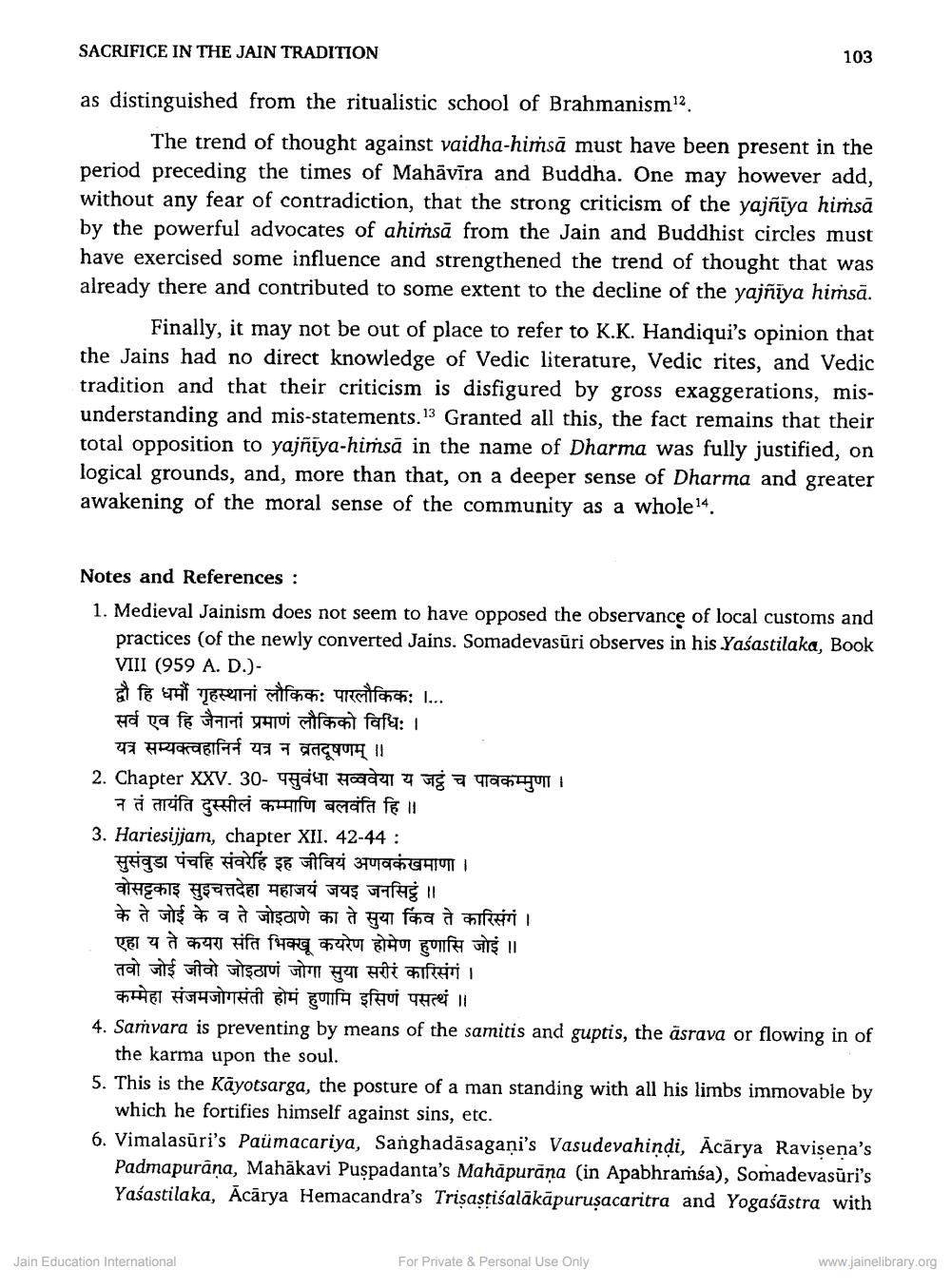________________ SACRIFICE IN THE JAIN TRADITION 103 as distinguished from the ritualistic school of Brahmanism12. The trend of thought against vaidha-himsa must have been present in the period preceding the times of Mahavira and Buddha. One may however add, without any fear of contradiction, that the strong criticism of the yajniya himsa by the powerful advocates of ahimsa from the Jain and Buddhist circles must have exercised some influence and strengthened the trend of thought that was already there and contributed to some extent to the decline of the yajniya himsa. Finally, it may not be out of place to refer to K.K. Handiqui's opinion that the Jains had no direct knowledge of Vedic literature, Vedic rites, and Vedic tradition and that their criticism is disfigured by gross exaggerations, misunderstanding and mis-statements. 13 Granted all this, the fact remains that their total opposition to yajniya-himsa in the name of Dharma was fully justified, on logical grounds, and, more than that, on a deeper sense of Dharma and greater awakening of the moral sense of the community as a whole14. Notes and References : 1. Medieval Jainism does not seem to have opposed the observance of local customs and practices (of the newly converted Jains. Somadevasuri observes in his Yasastilaka, Book VIII (959 A. D.)bat fe that TERHi milfont: qrifano: ... सर्व एव हि जैनानां प्रमाणं लौकिको विधिः / यत्र सम्यक्त्वहानिर्न यत्र न व्रतदूषणम् / / 2. Chapter XXV. 30- 40 Haden 3 og 2 4100140 न तं तायंति दुस्सीलं कम्माणि बलवंति हि // 3. Hariesijjam, chapter XII. 42-44 : सुसंवुडा पंचहि संवरेहिं इह जीवियं अणवकंखमाणा / वोसट्टकाइ सुइचत्तदेहा महाजयं जयइ जनसिटुं॥ के ते जोई के व ते जोइठाणे का ते सुया किंव ते कारिसंगं / एहा य ते कयरा संति भिक्खू कयरेण होमेण हुणासि जोइं // तवो जोई जीवो जोइठाणं जोगा सुया सरीरं कारिसंगं / कम्मेहा संजमजोगसंती होमं हुणामि इसिणं पसत्थं / / 4. Samvara is preventing by means of the samitis and guptis, the asrava or flowing in of the karma upon the soul. 5. This is the Kayotsarga, the posture of a man standing with all his limbs immovable by which he fortifies himself against sins, etc. 6. Vimalasuri's Paumacariya, Sanghadasagani's Vasudevahindi, Acarya Ravisena's Padmapurana, Mahakavi Puspadanta's Mahapurana (in Apabhramsa), Somadevasuri's Yasastilaka, Acarya Hemacandra's Trisastisalakapurusacaritra and Yogasastra with For Private & Personal Use Only Jain Education International www.jainelibrary.org




